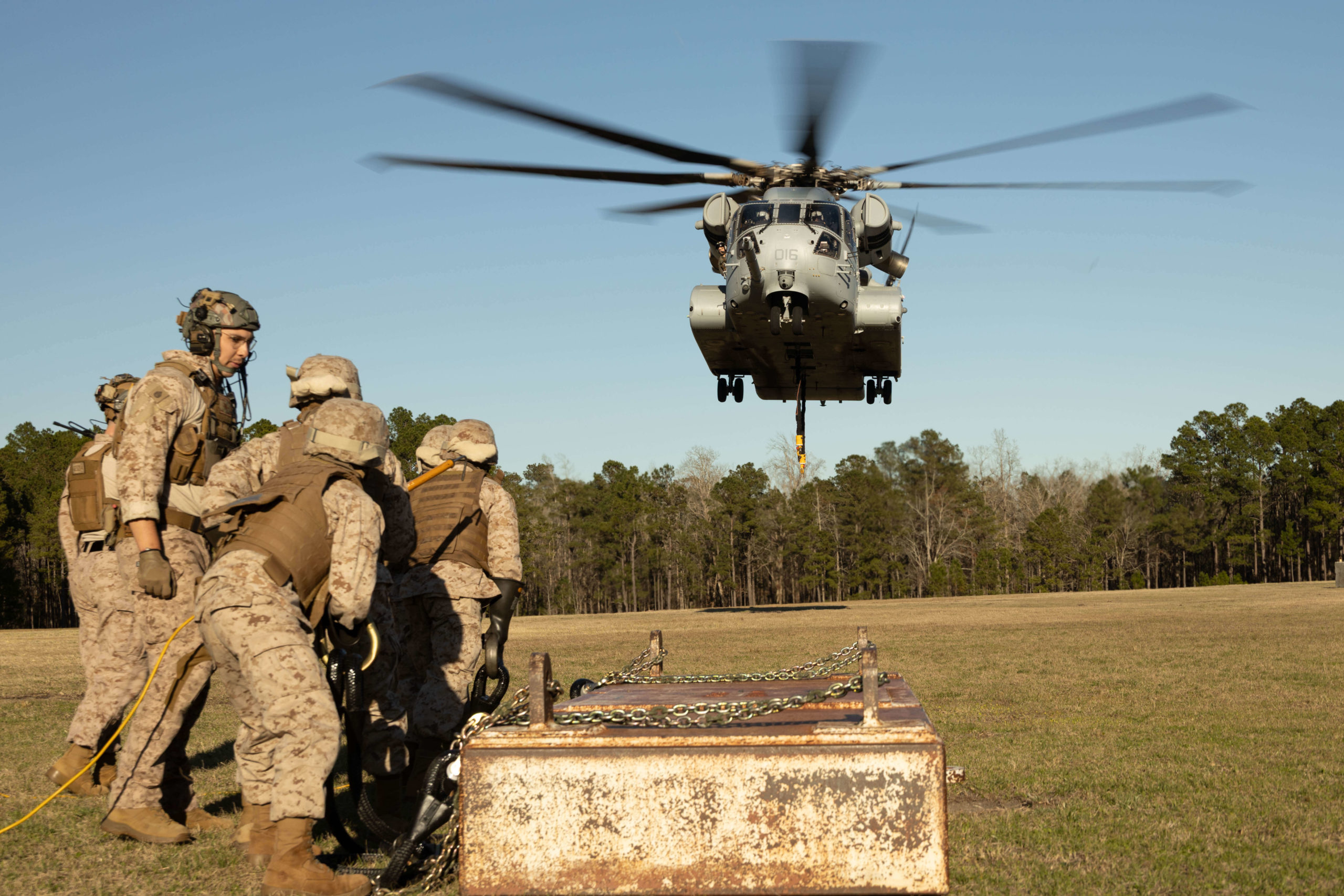Born Digital: The CH-53K is a Next-Generation Aircraft
The CH-53K is a fully digital aircraft, while its predecessor, the CH-53E, is a mechanical aircraft.
It is manufactured via a digital twin process.
This fundamental difference means the CH-53K was digitally designed and manufactured using a digital thread production and assembly process. This digital approach creates a continuous feedback loop that connects design, manufacturing, and sustainment in ways impossible with the mechanically designed CH-53E.
A digital twin is a virtual representation or simulation model of a physical product, process, or system that uses real-time data and advanced analytics to enable understanding, learning, and reasoning about its physical counterpart. Digital twins serve as a bridge between the physical and digital worlds, allowing for monitoring, analysis, and optimization of the physical entity throughout its lifecycle.
Digital twins have significantly transformed manufacturing in several ways:
- Design and Development: Digital twins enable manufacturers to test and validate designs virtually before physical production, reducing design errors and prototyping costs.
- Production Optimization: By simulating manufacturing processes, companies can identify bottlenecks, optimize workflows, and improve overall efficiency.
- Quality Control: Digital twins help predict defects and quality issues before they occur in the physical product, improving product quality and reducing waste.
- Customization: Manufacturers can more easily customize products to specific customer requirements by testing variations virtually.
- Supply Chain Integration: Digital twins can model entire supply chains, helping to identify risks and optimize logistics.
For system maintenance and sustainment, digital twins offer several benefits:
- Predictive Maintenance: By analyzing real-time data from sensors, digital twins can predict when components might fail, allowing for maintenance to be performed before costly breakdowns occur.
- Remote Diagnostics: Engineers can remotely diagnose issues using the digital twin, reducing the need for on-site inspections.
- Lifecycle Management: Digital twins provide insights into how systems age and degrade, enabling better lifecycle planning and management.
- Training: Maintenance personnel can be trained using the digital twin in a safe, virtual environment before working on the actual system.
- Documentation and Knowledge Transfer: Digital twins serve as comprehensive repositories of system information, facilitating knowledge transfer and reducing dependency on individual expertise.
Digital twins represent a significant shift in how we approach manufacturing and maintenance, moving from reactive to proactive strategies through the power of data and simulation.
One of the most significant long-term benefits of the digital twin approach is the ability to more easily upgrade and modify the aircraft.
With digital aircraft like the CH-53K, customization and modernization follow a totally different growth path than legacy aircraft like the CH-53E. Software modifications and reconfigurations can provide distinctive variants in ways that legacy systems would require hardware changes to accomplish.
In summary, the digital twin process used to produce the CH-53K creates a fundamentally different aircraft compared to the mechanical CH-53E. While they may look similar externally, the digital approach has enabled major improvements in performance, maintenance requirements, crew experience, and long-term sustainability that will benefit the Marine Corps throughout the aircraft’s service life.
I discussed the impact of being born digital upon the CH-53K and shaping new ways ahead for the USMC in leveraging what this digital aircraft brings to the fight with Jim Andrews, Chief Engineer Director, Marine Corps Systems, at Sikorsky. Mr. Andrews has over 30 years of experience in technical analysis, design integration, test, and project engineering. He is responsible for all technical activities related to Sikorsky’s H-53 and VH programs including design, development, integration, test, fleet support and capture of new business.
The first comment he made was that the digital design process enables an interactive flow to the manufacturing line through to the maintenance enterprise. Because of the digital twin process, the aircraft produced through this process will have it digital DNA throughout its life cycle.
And with the data generated by the operational of aircraft, one has a very good picture of how parts are performing and in which operational settings and under which operational conditions.
With a proper organization of the supply chain through to the deployed aircraft, it is possible not only to have enhanced domain knowledge of the predictability and performance of parts, but one can with a proper marrying of that knowledge to an appropriately managed supply chain, the availability of aircraft in theater will be significantly enhanced.
The challenge is to marry what the technology enables in terms of a digital aircraft with an appropriate supply chain-maintenance organizational approach and effort.
As Andrews put it: ‘With the usage monitoring data that we get off the aircraft to be able to do predictive maintenance, we can effectively change how we sustain the aircraft and enhance significantly readiness rates.”
The digital backbone of the aircraft allows for the use of a MOSA approach to software upgrades, and an ability of the aircraft to work with a variety of autonomous systems on the way to the force.
We than discussed how the aircraft is well designed for the payload revolution in terms of what one could add to the aircraft or what the aircraft could work with in the extended battlespace.
In effect, the heavy lift aircraft was shifting from physical payloads to being able to encompass a capability to operate digital payloads on or off the aircraft.
In other words, being born digital is very significant as the role of digital payloads operating in various ways in the battlespace become part of the aircraft’s operational envelope.
The sustainment piece is especially important to understand and I turn to that next.
Featured photo: U.S. Marines with Logistics Operations School conduct helicopter support team training utilizing a CH-53K King Stallion assigned to Marine Heavy Helicopter Squadron (HMH) 461 at Camp Lejeune, North Carolina, March 18, 2025. The HST training is designed to prepare Marines to manage activities at landing zones and to facilitate the pickup, movement, and landing of helicopter-borne troops, equipment, and supplies. (U.S. Marine Corps photo by Cpl. Zachariah Ferraro),

